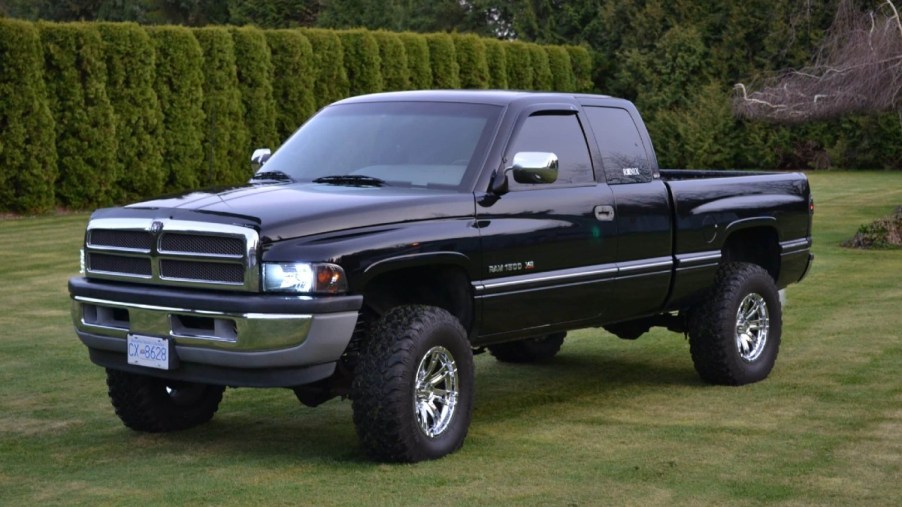
Dodge and Ram Cummins Diesel Engines Through the Years
By the mid-1980s Dodge Ram was in trouble. It was known for its workhorse pickups going back to before its legendary Power Wagons. But now it had no diesel engines to bolster its engine lineup and, maybe, more importantly, its tough image. Developing a new diesel engine from scratch was out of the question. Though a completely new 1994 truck design was still years off, Dodge couldn’t wait. So in the late-1980s an unlikely arrangement with legendary Cummins Diesel in Columbus, Indiana, was born.
For decades Cummins had offered diesel engines for heavy-duty semi-trucks and commercial applications but had never delved into the consumer pickup truck market. Why should it? The Big Three carmakers were fully capable of doing it themselves.
What year did the first Ram Cummins diesel engines arrive?

But not Dodge at this time. So this partnership proved valuable for both companies and spawned a series of Ram Cummins diesel truck applications. In 1989 the first engine from the collaboration was the iconic 5.9-liter, 12-valve Cummins. First offered in the medium-duty D200 and D300 trucks, it packed 160 hp, but its torque rating held a 400 lb-ft of grunt.
As diesel engines have advanced with better technology, this is now considered a rudimentary design. Some of this is attributed to the fixed geometry turbocharging. But that worked well for consumers because the engines were such that DIY repair was easier than with later versions. And the engine was a workhorse, yet offered around 25 mpg. It continued production of this most successful diesel engine for years before the second-generation ram Cummins was developed.
This was done specifically to tie into the unveiling of its entirely new 1994 truck, the first in over 20 years. While the 5.9 Cummins was mostly unchanged, it featured a new addition, the Bosch P7100 “P-pump” mechanical injection pump. It was backed up by a 47RH four-speed automatic in 1994 and 1995, the NV4500 five-speed manual from 1994 to 1998, and the 47RE four-speed automatic from 1996 through 1998. In this configuration, the 5.9 provided bulletproof service for a few more years under Ram 2500 and 3500 hoods.
Mid-1998 to 2002 5.9-liter Ram Cummins diesel

Then in mid-1998, a new 5.9-liter Cummins diesel was developed, nicknamed the “53 block.” It featured a 24-valve design, again with Bosch injection. But this was the electrically-controlled VP44 injection unit. Unfortunately, the unit caused fuel starvation issues, and this wasn’t its only flaw.
The 53 block moniker stood for the number 53 cast into the blocks. Unfortunately, this identified a fatal flaw, as cracks would develop until coolant literally pours out. According to Raybuck, it’s caused by thin water jacket walls, which develop cracks from the pressure of coolant cavitation, corrosion, and pressure in the block. Despite these flaws, the new engines could crank out between 400 and 500 hp utilizing aftermarket modifications. The High Output 2001 to 2002 engines had 10 more horsepower and 45 lb-ft more torque.
Enthusiasts consider any year from this generation will serve owners well, as long as they don’t have a 53 block but do have a manual transmission. The two manual transmissions offered were the NV4500 five-speed manual in 1998 through 2002 and the NV5600 six-speed transmission in 2001 and 2002 HO models.
Third Generation 2003 to 2007 5.9-liter Ram Cummins diesel

This era offered both quad-cabs for the first time and Mega-Cabs starting in 2006. The 5.9-liter diesel’s new common-rail injection system gave it more power and torque. These engines were also smoother and quieter than the earlier Cummins units. They also saw aftermarket tunes and components increase power from between 400 hp and 500 hp, and have a reputation for reliability. This generation was the last without emissions control devices.
If you need to make repairs to the common rail the components are relatively expensive. And if your truck has made it to 200,000 miles without repairs or replacement, you’ll need to replace the pump and CP3 pump. The automatic transmission, though up to the task from the factory, doesn’t take well to modified engines’ added power. Though all years of the third-gen Rams are desirable, enthusiasts favor the 2006 to 2007 years.
Fourth Generation 2007 to 2019 6.7-liter Ram Cummins diesel

By mid-2007, Ram began offering a new Cummins diesel engine, this one a 6.7-liter. Each year saw minor changes that upped horsepower and torque ratings. Around 2010, the 6.7-liter packed 370 hp, 800 ft-lbs of torque, and had a towing capacity of 17,500 lbs. By 2011, Ram added its new integrated exhaust brake which allowed for more towing capacity.
Variable geometry turbocharging was used for the first time. There is much less lag and they feature better responsiveness across the power bands. Emissions controls began appearing in mid-2007 that included exhaust gas recirculation, diesel oxidation catalyst, and diesel particulate filters. This was also the era when Ram was ramping up its technology with features like keyless ignition, air suspension, and improved infotainment systems.



